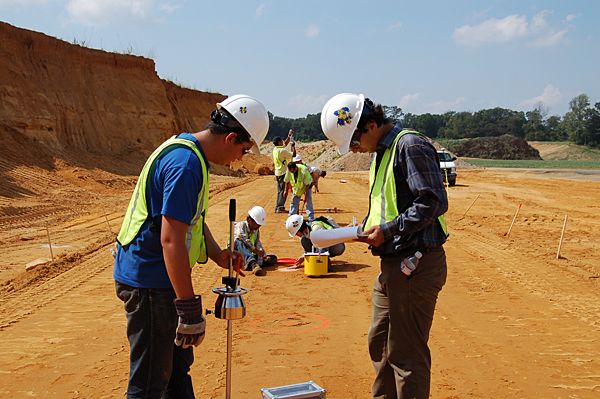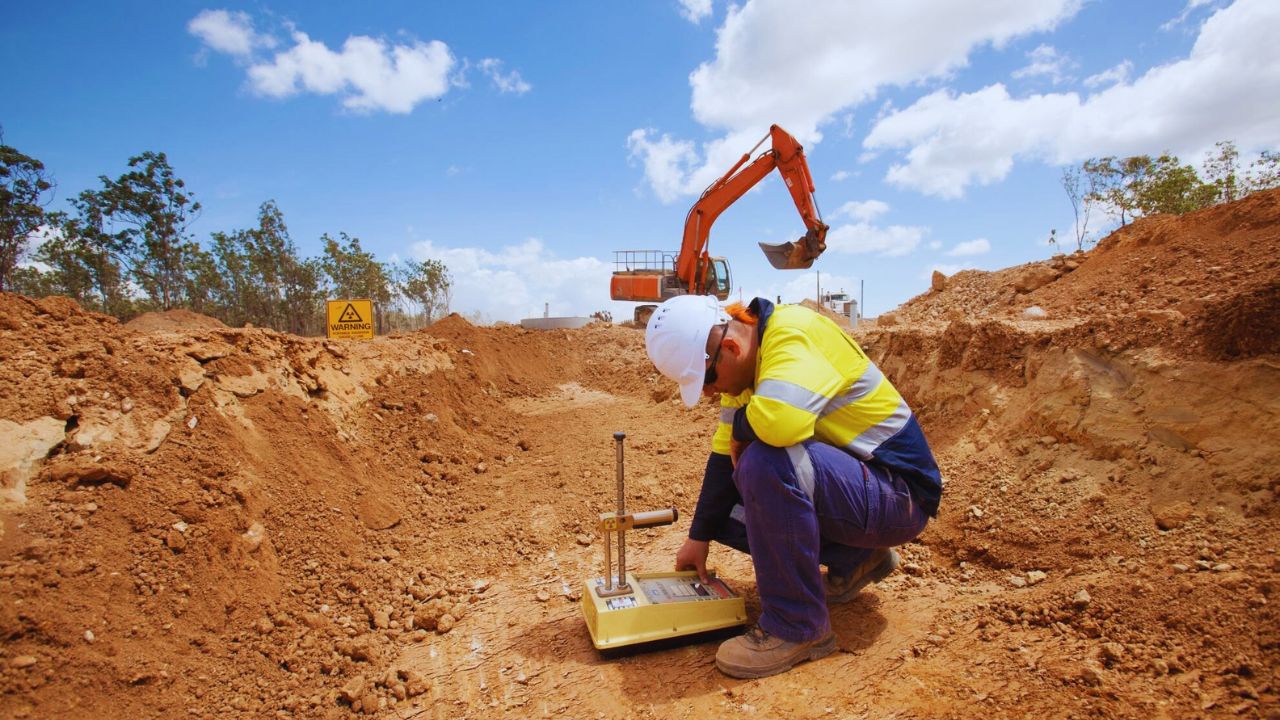Why All About Geotechnical Engineering Matters in Today's Framework Advancement
Wiki Article
An Extensive Introduction of Geotechnical Design Techniques and Their Influence on Modern Civil Engineering Projects
Geotechnical engineering offers as the backbone of modern-day civil engineering, supplying necessary methods that address the intricacies of subsurface problems. The interaction of soil evaluation, foundation layout, and innovative technologies forms the stability and sustainability of infrastructure projects.Significance of Geotechnical Engineering
Geotechnical design functions as a critical foundation for civil engineering tasks, affecting the safety and security and stability of structures. This technique concentrates on the actions of soil and rock products, providing vital understandings that lead the layout and construction processes. By recognizing the communication in between the planet and crafted frameworks, geotechnical engineers can evaluate threats connected with ground conditions, such as negotiation, incline security, and liquefaction.The significance of geotechnical engineering prolongs past plain architectural stability; it plays an essential role in ecological defense and sustainability. Properly carried out geotechnical assessments make sure that projects lessen their eco-friendly footprint and abide by governing requirements (about geotechnical engineering). Geotechnical design is instrumental in site selection, allowing engineers to determine appropriate places for building and construction that reduce prospective dangers.
On top of that, geotechnical design fosters technology in civil design by advancing methods for ground improvement, foundation style, and excavation. The discipline's contributions are vital in resolving obstacles postured by differing dirt problems, hence facilitating risk-free and reliable infrastructure development. Generally, the significance of geotechnical engineering is paramount in making sure that civil design projects are not only possible however also resistant against synthetic and natural misfortunes.
Trick Strategies in Geotechnical Design

Another vital strategy is soil stabilization, which entails modifying dirt properties to improve load-bearing capacity or lower settlement. Techniques such as adding concrete, lime, or utilizing geosynthetics are typically utilized to attain dirt enhancement.
Ground improvement techniques, consisting of vibrant compaction and vibro-replacement, are likewise vital. These methods intend to compress soft or loose soils, improving their toughness and reducing liquefaction potential in seismic locations.
Keeping structures, such as sheet piles and dirt nailing, are utilized to support excavations and prevent soil activity. Slope stabilization methods, including drain systems and retaining wall surfaces, are vital for mitigating landslide dangers.

Soil Analysis and Testing Methods
Effective soil evaluation and screening approaches are important for recognizing the physical and chemical buildings of soil, which directly affect design decisions. An extensive analysis of dirt attributes is necessary for anticipating actions under different loading conditions and environmental influences.Typical dirt testing methods include both field and research laboratory methods. Area tests, such as the Standard Penetration Test (SPT) and Cone Penetration Examination (CPT), provide prompt understandings right into dirt stratification, density, and toughness. These tests assist designers examine site conditions successfully before even more substantial laboratory analyses.
Research laboratory testing techniques, such as Atterberg restrictions, grain size distribution, and compaction examinations, are essential for identifying dirt plasticity, wetness web content, and ideal compaction levels. Advanced strategies like triaxial examinations and consolidated undrained (CU) examinations provide valuable data on shear toughness and efficient tension specifications.
Chemical testing, including pH, electric conductivity, and natural web content analysis, is also look these up important for recognizing possible dirt contamination and its influence on building products. Jointly, these dirt analysis her latest blog and testing methods form the foundation of notified decision-making in geotechnical engineering, making sure the safety and stability of modern civil engineering jobs.
Foundation Layout Approaches
These methods can be categorized right into deep and superficial structures, each suited to specific dirt conditions and loading scenarios. Superficial foundations, such as spread footings and mat structures, are typically used when surface dirts have adequate bearing capacity.In contrast, deep structures, consisting of stacks and drilled shafts, are employed when surface dirts are weak or insufficient for sustaining the structure. These foundations transfer loads to much deeper, more secure dirt or rock layers, making them essential for skyscraper buildings and bridges in tough geotechnical problems.
Choosing the appropriate foundation design involves extensive geotechnical investigations, consisting of dirt make-up, birthing capacity, and groundwater problems. Engineers need to take into consideration elements such as negotiation, side loads, and prospective seismic task to ensure the structure's efficiency over time.
Inevitably, a well-executed structure design is a critical element of civil design, directly influencing the safety and security, durability, and capability of frameworks. about geotechnical engineering. By lining up structure types with site-specific conditions, designers can properly reduce risks related to structure failing
Developments Forming Civil Design

Sustainable materials, such as high-performance concrete and recycled accumulations, are likewise getting grip, promoting environment-friendly techniques while keeping architectural integrity. Furthermore, progressed geotechnical techniques, such as ground enhancement and deep mixing approaches, are improving the security of foundations in challenging soil conditions.
In addition, the usage of drones and remote picking up technology is enhancing site surveying and keeping an eye on, providing real-time data that aids in managing building development and safety and security. The implementation of ingenious building and construction approaches, such as prefabricated and modular building, better expedites job timelines other and minimizes waste. Jointly, these developments are not only transforming civil engineering techniques yet likewise making sure that modern-day facilities fulfills the needs of an expanding international populace while resolving environmental issues.
Final Thought
In conclusion, geotechnical engineering strategies are important to the success of modern civil engineering tasks. By utilizing these strategies, engineers can minimize threats and contribute to the advancement of resistant metropolitan settings, ultimately promoting sustainable development and safety in civil engineering techniques.Geotechnical engineering serves as the foundation of modern civil engineering, giving necessary techniques that resolve the complexities of subsurface problems.Geotechnical design serves as a vital foundation for civil design tasks, influencing the safety and security and security of frameworks.In enhancement, geotechnical engineering promotes innovation in civil engineering by progressing strategies for ground improvement, foundation layout, and excavation. Generally, the significance of geotechnical design is paramount in ensuring that civil design projects are not just feasible yet also durable versus natural and man-made misfortunes.
In final thought, geotechnical design strategies are integral to the success of modern civil engineering tasks.
Report this wiki page